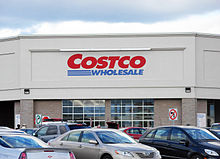
Nico B
If you were to stand in the front balcony of my second floor apartment and look out onto the long row of two story houses with the freshly mowed lawns and Cadillac Escalade filled driveways, you would think that I live in some high-end apartment building that you see the athletes or wealthy businessmen living in on television. On the contrary, if you were to stand in the back balcony of my second floor apartment and observe the surroundings you would notice such things as: a run down playground, some friends smoking cigarettes on the bench, or a little kid no older than five playing by themselves without supervision of, well, anyone. These are all things I have observed. Some events that I’ve seen from my front porch include: a giant blowup waterslide for warm weather in a front yard, a father teaching his son how hit a baseball, and a couple sitting under the shade of a tree, but never a shady character which on occasion can be found right outside of the back balcony. Yes the two balconies are part of the same apartment, but they reveal two different worlds; one world of suburban middle to high class families and another world of the complete opposite. The front balcony shows the best of worlds, the back balcony shows the worst of worlds.
Along with the balconies showing differences of money or social class, there are huge differences in what the scenery looks like; beyond the people or their objects. When looking out of my front balcony you can see the nice shrubbery and plant life growing next to the sidewalks; when looking out the back you see partly overgrown grass and a mysterious plant in a neighbor’s window. While everyday two or three men make sure everything is perfect out front, it seems that someone has to be making everything look as imperfect out back. Not only are the sights seen out of both balconies different, but the sounds are diverse as well. In the front you hear a fake waterfall that sounds real and is soothing and relaxing; in the back you hear either fighting or loud music being blasted for the entire complex’s enjoyment (no one enjoys it). Everything outside the front of my apartment is the opposite- sights or sounds- of everything out back. It seems to be that the sun shines brighter in the front, whereas out back the moon is dimmer with less glow. Out in the back the mood is dark, depressing and cynical; in the front the atmosphere is bright, enlightening, and joyful.
When I stand on my front balcony and look at everything below, I see a lifestyle that I have really never known. Money, cars, and homes- this is what I see from my front balcony. I see everything that I aspire to be; everything that I want to achieve and everything I want to get to. Outside of that balcony you can see families that look so functional to the spectator. Sometimes I am forced to wonder if maybe that’s just what I observe or if it’s always perfect when you live like those families do. Are their houses much nicer than mine? Is everything more fun on their side of the street? Are those families’ leagues happier than any that live in my complex? Unfortunately that is the disadvantage of the observer. Everything seems better- houses nicer, stars brighter, people happier- outside the front balcony.
Unfortunately, like always, there are two sides to a story; my other side is right out the back door of my room. The back balcony is the evil twin. Both the back and front balconies are identical in material, structure, and color, yet they couldn’t be more opposite. The front balcony displays all of the things I would like to get to while the back reminds me of all the things I would like to get away from: dysfunctional families, a parent that could care less, teenagers throwing their lives away so early. Although all these descriptions are terrible, when I see kids my age smoking on the bench or young children playing without a parent, it reminds me of where I came from. Most people would say to be proud of where you came from, but this is an exception to that adage. When I just watch what goes on behind my apartment I realize that maybe it is better to be proud of what you are trying to accomplish rather than what you are running from.
Where everything is the same where you stand, everything is different where you look. Whether it’s the reminders or the people or the cars or the houses or the scenery or even the sounds, everything is different. Everything is the opposite. Out in the back of my apartment I would like to think of as my past; the front I would like to think of as my future. Maybe inside the apartment is just a temporary resting place for me; maybe it is a portal from past to present to future. The worst of my life can be seen through my back balcony, but where there is dark a light can be found, and my front balcony is that light.






